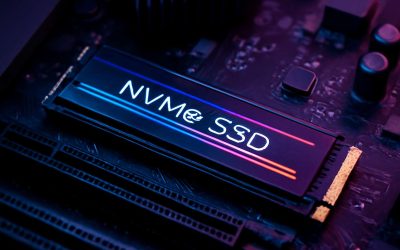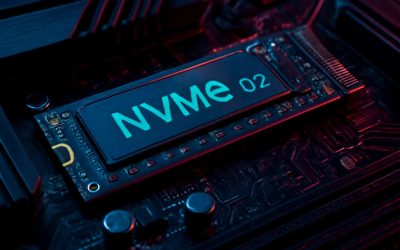
A storage device is a type of computer memory that stores data files. It can come in a variety of shapes and sizes, depending on its requirements and functionality. It holds almost all of the large datasets in a computer, with the exception of hardware firmware. A storage device is among the most important components of a computer, and it comes in different structures and capacities to meet its needs and capabilities. It is categorized into two kinds: primary and secondary.
Primary storage is a form of internal computer memory that is used to store program instructions and input data for processing. It also stores intermediate results and outputs. Primary storage is often called main memory or random access memory (RAM). It is usually smaller than secondary storage, which consists of hard disk drives, CDs, DVDs, and USB drives that can be connected externally.
There are various types of computer storage devices, and each one has its own unique features that can make it a great choice for any specific need. For example, a USB flash drive has a small size and can easily fit in your pocket. On the other hand, a hard disk drive has a larger capacity and can provide you with a lot of space for storing all your files. There are also other types of storage devices, such as solid state drives, which can be used to replace traditional hard disk drives because they are much more reliable and faster than their counterparts.
The most popular storage device is the hard disk drive, which can store vast amounts of information in a small space. A hard disk drive can hold more than 1000 gigabytes of information, which is more than enough for most applications. There are also other types of storage devices, including optical discs and magnetic tapes. These devices can be used to backup a large amount of data, and they are relatively inexpensive.
Earlier, storage devices consisted of primitive mechanical systems based on items such as punch cards and magnetic tape, which presented binary information through physical medium. However, these were rendered obsolete by the development of other digital storage devices, such as floppy disks and compact discs, which could present more information in a more convenient manner. Later, other technologies such as flash memory were developed.
When it comes to tertiary storage, the computer will consult a catalog database to determine which tape or disc contains the desired information. The computer will then instruct a robotic arm to fetch the medium and load it into a built-in drive. This process may take some time, depending on the size of the library and its storage media.
Some types of storage devices, such as a DVD-RW, allow the information to be overwritten as many times as needed. Others, such as semiconductor programmable read-only memory, only allow the information to be written once at the time of manufacture. This allows the information to be retrieved at a later date with no loss of data.



0 Comments